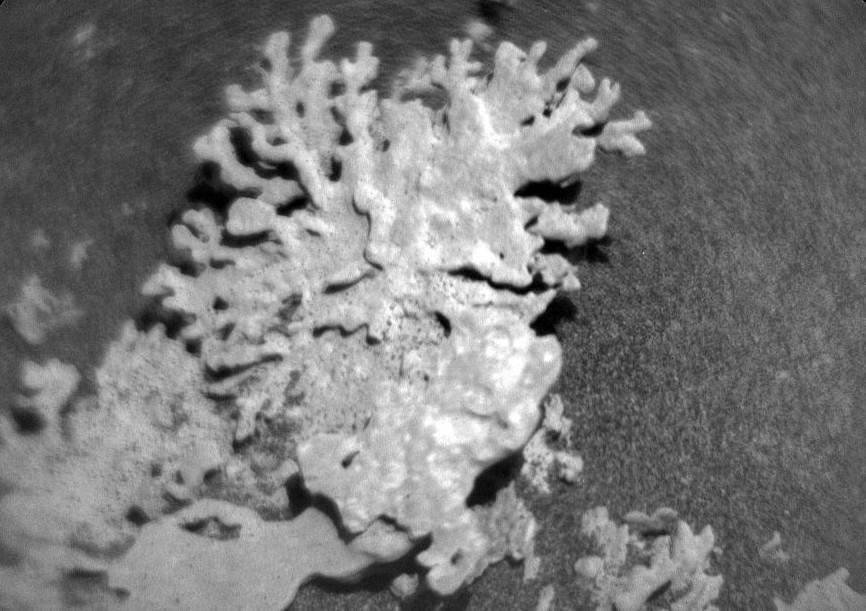
Coral-shaped rock spotted on Mars, NASA shares pic
NASA’s Curiosity Mars rover has sent back some fascinating images of a rock on the Martian surface that bears an uncanny resemblance to a piece of coral. The rock was discovered in the Gale Crater, a large impact basin on Mars, and according to NASA, it is estimated to be around a billion years old.
The images were captured by the rover’s ChemCam, a laser-induced breakdown spectroscopy (LIBS) instrument that is used to analyze the chemical composition of rocks and soil on Mars. The ChemCam uses a high-powered laser to vaporize a small portion of the rock, and then analyzes the resulting plasma to determine the chemical makeup of the sample.
The coral-shaped rock is a striking example of the unique geological features that can be found on Mars. Despite being a barren and rocky planet, Mars has a rich geological history that has been shaped by billions of years of erosion, sedimentation, and volcanic activity.
The Gale Crater, where the coral-shaped rock was found, is a prime example of this geological history. The crater is thought to have formed as a result of a massive asteroid impact that occurred around 3.5 billion years ago. Since then, the crater has been shaped by erosion and sedimentation, and has become a home to a wide variety of geological features, including rocks, sand dunes, and even ancient lakebeds.
The coral-shaped rock is just one of many fascinating geological features that have been discovered on Mars by NASA’s Curiosity rover. Since landing on the planet in 2012, the rover has been exploring the Gale Crater and discovering new and exciting geological features at every turn.
One of the most significant discoveries made by the Curiosity rover is the presence of ancient lakes and rivers on Mars. The rover has found evidence of ancient lakebeds, deltas, and even riverbeds, which suggests that Mars was once a much more hospitable place than it is today.
The discovery of these ancient lakes and rivers has significant implications for our understanding of the history of Mars. It suggests that the planet may have once had a climate that was more similar to Earth’s, and that it may have even been capable of supporting life.
The coral-shaped rock is just one of many fascinating geological features that have been discovered on Mars by NASA’s Curiosity rover. Despite being a barren and rocky planet, Mars is a fascinating place that is full of surprises, and the Curiosity rover has been instrumental in helping us to understand its geological history.
According to NASA, the coral-shaped rock is believed to be a billion years old, which is a relatively young age in the geological history of Mars. The rock is thought to have formed as a result of the interaction between magma and groundwater, which is a common process on Mars that has shaped the planet’s geological history.
The discovery of the coral-shaped rock is a significant milestone in the exploration of Mars, and it highlights the importance of continued exploration and research on the planet. As we continue to explore Mars and learn more about its geological history, we are likely to make even more fascinating discoveries that will help us to better understand this fascinating planet.
In conclusion, the coral-shaped rock spotted on Mars by NASA’s Curiosity rover is a fascinating example of the unique geological features that can be found on the planet. The rock is estimated to be around a billion years old, and it is thought to have formed as a result of the interaction between magma and groundwater. The discovery of the rock is a significant milestone in the exploration of Mars, and it highlights the importance of continued exploration and research on the planet.
Source: https://www.jpl.nasa.gov/images/pia26634-curiositys-chemcam-views-a-rock-shaped-like-coral/






